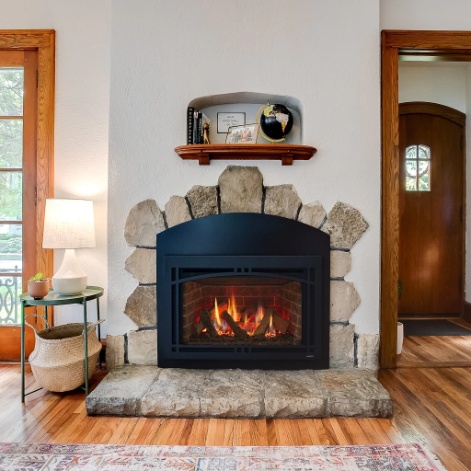Table of Contents
Gas fireplace logs are a popular and convenient alternative to traditional wood-burning fireplaces. However, many people are often curious about what gas fireplace logs are actually made of. In this article, we will explore the surprising answer to this question and delve into the different types of gas fireplace logs available in the market.
Gas fireplace logs, also known as gas logs or artificial logs, are designed to mimic the appearance and ambiance of real wood logs. They are typically made from ceramic fiber or refractory cement materials. These materials are chosen for their ability to withstand high temperatures and provide realistic and long-lasting flames.
Understanding the basics of gas fireplace logs is important to make an informed decision when choosing the right type for your fireplace. We will discuss the different types of gas fireplace logs, including traditional logs and alternative options. we will explore the advantages and disadvantages of each type to help you determine which option suits your needs and preferences.
Whether you are looking for a classic and authentic look or a more modern and environmentally-friendly option, this article will provide you with valuable insights to select the best gas fireplace logs for your home. So, let’s dive into the surprising answer to what gas fireplace logs are made of and explore the various options available in the market.
The Basics of Gas Fireplace Logs
Gas fireplace logs are artificial logs designed to mimic the appearance of real wood logs when used in gas fireplaces. They are typically made from ceramic fiber or refractory cement.
Here are the basic characteristics and advantages of each material:
- Ceramic Fiber Logs: These logs are made from a lightweight ceramic fiber material that is designed to resemble the texture and appearance of real wood. They are highly heat-resistant and can withstand the high temperatures generated by gas fireplaces. Ceramic fiber logs provide a realistic and natural-looking flame pattern.
- Refractory Cement Logs: Refractory cement logs are made from a dense and durable cement-like material. They are molded and painted to resemble real wood logs. Refractory cement logs have excellent heat retention properties, which allows them to radiate heat even after the gas fireplace is turned off. They provide a long-lasting and realistic fire experience.
Advantages Over Wood Logs
- Convenience: Gas fireplace logs are easy to use and require minimal maintenance compared to real wood logs. They do not produce ash, soot, or smoke, eliminating the need for regular cleaning.
- Efficiency: Gas fireplace logs are energy-efficient, as they generate consistent heat without the need for constant fueling. They can also be controlled with precision, allowing users to adjust the flame height and heat output according to their preferences.
- Safety: Using gas fireplace logs eliminates the risk of sparks, flying embers, and chimney fires associated with burning real wood. They provide a controlled and contained fire, making them a safer option for indoor fireplaces.
- Environmental Impact: Gas fireplace logs are considered a more environmentally friendly option compared to burning real wood, as they do not contribute to deforestation or air pollution caused by wood smoke.
Gas fireplace logs offer the warmth and ambiance of a traditional fire without the drawbacks of burning real wood. Whether you choose ceramic fiber or refractory cement logs, they provide a durable, realistic, and convenient solution for enjoying a cozy fire in your gas fireplace.
What are Gas Fireplace Logs?
Gas fireplace logs are artificial logs that are designed to mimic the appearance of real wood logs when placed in a gas fireplace. They are typically made from a combination of materials such as refractory cement and ceramic fibers. Refractory cement, a heat-resistant material, ensures that the logs can withstand high temperatures without cracking or showing signs of wear. Meanwhile, lightweight and durable ceramic fibers contribute to the creation of realistic-looking logs.
Gas fireplace logs can be used in both vented and vent-free gas fireplaces. Vented gas logs require a chimney or flue for the smoke and fumes to escape, while vent-free gas logs do not require any external ventilation.
One of the advantages of gas fireplace logs is their ability to give off more heat compared to traditional wood fireplaces. In addition, they have a long lifespan and eliminate the need for chopping wood or cleaning up ash. However, regular maintenance and cleaning are still necessary to keep them visually appealing.
When selecting gas fireplace logs, it is crucial to consider various factors such as safety, material durability, longevity, heat output, maintenance, and cost efficiency. To ensure safe and accurate installation, consulting with a qualified expert or licensed professional is highly recommended.
Overall, gas fireplace logs offer a convenient and practical alternative to traditional wood-burning fireplaces. Constructed with a combination of refractory cement and ceramic fibers, they possess durability and the ability to withstand high temperatures. By taking the mentioned factors into account, you will be able to choose the most suitable gas fireplace logs that align with your needs and preferences.
How do Gas Fireplace Logs Work?
Gas fireplace logs work by utilizing a gas burner system to produce flames and heat. Here is a step-by-step explanation of how gas fireplace logs work:
- Gas supply: Natural gas or propane gas is used as the fuel source for the logs. The gas is supplied through a gas line connected to the fireplace.
- Ignition: When the fireplace is turned on, a spark ignites the gas at the burner, creating a flame.
- Heat distribution: The flames from the gas logs heat up the surrounding ceramic logs or refractory cement logs. These materials are designed to withstand high temperatures and give off more heat.
- Realistic flame appearance: The gas logs are designed to mimic the appearance of a traditional wood-burning fireplace. The logs are made from materials such as ceramic fibers or a mixture of cement and ceramic. They can be molded and painted to resemble real wood logs.
- Heat control: Gas fireplace logs usually come with a control valve that allows you to adjust the flame height and heat output. This control valve can be operated manually or electronically.
- Safety features: To ensure safe operation, gas fireplace logs often include a safety pilot light system. This pilot light remains lit as long as the gas is flowing, and it can automatically shut off the gas supply if the flame goes out.
- Maintenance: Gas fireplace logs require regular cleaning to remove dust and debris. It is important to follow the manufacturer’s instructions for cleaning and maintenance to keep the logs in good condition.
By understanding how gas fireplace logs work, you can make an informed decision when choosing the right logs for your fireplace.
How do Gas Fireplace Logs Work?
Traditional Gas Fireplace Logs
Traditional gas fireplace logs are typically made of a mixture of ceramic fibers and cement. This combination creates a durable and heat-resistant material that closely resembles the appearance of real wood logs.
Here are some key characteristics of traditional gas fireplace logs:
- Realistic Appearance: Gas fireplace logs are carefully designed to mimic the look of natural wood logs. They are textured and colored to resemble the variations and charred marks found in real wood.
- Heat Resistance: The materials used in gas fireplace logs are chosen for their ability to withstand high temperatures without warping or deteriorating. This allows them to endure the heat produced by the gas burner inside the fireplace.
- Lightweight: Ceramic fiber and cement are relatively lightweight materials, making gas fireplace logs easy to handle and install. This also ensures that the logs won’t put excessive strain on the fireplace structure.
- Non-Combustible: Unlike real wood logs, gas fireplace logs are non-combustible. This means they won’t catch fire or produce flames when exposed to the heat of the gas burner. This enhances safety and reduces the risk of accidental fires.
- Longevity: Gas fireplace logs are designed to be long-lasting. They are resistant to wear and tear, fading, and discoloration, allowing them to maintain their appearance and functionality over time.
- Variety of Styles: Gas fireplace logs come in various styles and sizes to suit different aesthetic preferences. Some logs have a more traditional, rustic look, while others may resemble driftwood or have a contemporary design.
Traditional gas fireplace logs offer the convenience and beauty of a wood-burning fire without the hassle of gathering and storing real firewood. They provide a reliable and efficient way to enjoy the warmth and ambiance of a fireplace.
What are Traditional Gas Fireplace Logs Made Of?
What are Traditional Gas Fireplace Logs Made Of?
Traditional gas fireplace logs are typically created using a blend of refractory cement and ceramic fibers. These carefully selected materials ensure the logs can withstand high temperatures and maintain their quality for a long time. The refractory cement adds durability, while the ceramic fibers contribute to a lifelike appearance.
One notable advantage of traditional gas fireplace logs is their ability to emit more heat compared to other types of gas logs. This makes them a popular choice for individuals seeking effective warmth in their space. Unlike certain gas appliances, these logs do not produce unpleasant odors.
However, it is important to consider a few drawbacks. Over time, traditional gas logs may develop cracks as a result of the extreme temperatures they endure. This occasional maintenance may necessitate either repairing or replacing the logs. Additionally, they may be pricier when compared to alternative options.
When deciding on traditional gas fireplace logs, it is crucial to seek guidance from a qualified expert or licensed professional. They possess the knowledge and expertise necessary to assist in the decision-making process and ensure the proper installation of the logs. Furthermore, regular cleaning is imperative to preserve the appearance and functionality of gas fireplace logs.
In essence, traditional gas fireplace logs consist of refractory cement and ceramic fibers. These logs offer heightened durability and greater heat emission than other gas log varieties. Nonetheless, they may require upkeep and incur higher costs. Consulting a professional during the selection and installation process is crucial.
Advantages of Traditional Gas Fireplace Logs
- Realistic appearance: Traditional gas fireplace logs offer the advantages of a realistic appearance, designed to mimic the look of real wood logs, providing a warm and inviting ambiance to your fireplace.
- No need for chopping wood: With traditional gas logs, there is no need to go through the hassle of chopping and storing firewood. You can enjoy the beauty of a fire without the physical labor.
- No smoke or ash: Unlike a wood-burning fireplace, traditional gas logs offer the advantages of no smoke or ash production. This means you won’t have to deal with the mess and cleanup associated with burning real wood.
- Consistent heat output: Traditional gas logs offer the advantages of a steady and consistent heat output. You can easily control the flame height and heat intensity to create a comfortable environment in your home.
- Convenience: Lighting a traditional gas fireplace is as simple as flipping a switch or pressing a button. You don’t have to worry about gathering kindling or starting a fire.
When choosing traditional gas fireplace logs, consider factors such as safety considerations, material durability, longevity, heat output, maintenance, cost, and efficiency. It is important to consult a qualified technician or licensed professional to ensure proper installation and maintenance of your gas logs.
Traditional gas fireplace logs offer the advantages of a realistic appearance, convenience, consistent heat output, and no smoke or ash. Incorporating these logs into your existing fireplace can enhance the comfort and ambiance of your home.
Disadvantages of Traditional Gas Fireplace Logs
The disadvantages of traditional gas fireplace logs include the following:
- Shows signs of wear: Over time, traditional gas fireplace logs may start to show signs of use and wear, such as fading paint or cracks.
- Less realistic appearance: While traditional logs can provide a realistic-looking flame, the logs themselves may not look as authentic as ceramic fiber gas logs.
- Limited durability: Traditional gas logs, especially those made from wood molds, may not be as durable as ceramic fiber gas logs or refractory cement logs and may need to be replaced more frequently.
- Less heat output: Traditional gas logs may not give off as much heat as other types of gas logs, reducing their ability to effectively warm a space.
- More maintenance required: Traditional gas logs may require more regular cleaning and maintenance to keep them looking their best and ensure efficient operation.
- Potential for unpleasant odor: In some cases, traditional gas logs may produce an unpleasant odor when burned, which can be a drawback for those sensitive to smells.
When considering traditional gas fireplace logs, it is important to weigh these disadvantages against the advantages and your own specific needs and preferences. If you value a more realistic appearance, durability, and easy maintenance, alternative options like ceramic fiber or refractory cement gas logs may be worth considering. Consulting with a qualified technician or fireplace professional can provide valuable insights and guidance in the decision-making process.
Alternative Gas Fireplace Log Options
When it comes to gas fireplace logs, there are several alternative options available:
- Ceramic Fiber Logs: These logs are made from a lightweight ceramic fiber material. They are designed to mimic the appearance of real wood logs and can provide a realistic and natural-looking flame.
- Refractory Concrete Logs: Made from a durable refractory concrete material, these logs are known for their heat resistance and longevity. They are designed to withstand high temperatures and can retain heat, providing a cozy and efficient heating experience.
- Ceramic Logs with Steel Reinforcement: These logs combine a ceramic material with steel reinforcement for added durability. The steel reinforcement enhances the structural integrity of the logs, making them less prone to cracking or breaking.
- Composite Logs: Composite logs are made from a mixture of natural materials, such as wood particles or sawdust, combined with a bonding agent. They can provide a more eco-friendly option and often have a realistic appearance.
- Refractory Ceramic Logs: These logs are made from a dense ceramic material that is resistant to heat and can withstand high temperatures. They are known for their durability and can provide a long-lasting and realistic flame effect.
These alternative gas fireplace log options offer a range of choices in terms of appearance, durability, and heat resistance. Whether you prefer a more traditional wood log look or a modern composite option, there is a gas fireplace log material to suit your preferences and enhance the ambiance of your home.
What are Alternative Gas Fireplace Logs Made Of?
Alternative gas fireplace logs are typically made of either ceramic fibers or refractory cement. Ceramic fiber logs are created by combining a powdered ceramic material with a binding agent, which is then molded into the shape of logs. These logs undergo a high-temperature process to enhance their strength and durability. On the other hand, refractory cement logs are made by mixing cement with other materials. The mixture is cast into the shape of logs and then hardened in a kiln.
These alternative gas fireplace logs offer numerous advantages. Firstly, they possess a more authentic appearance compared to traditional gas logs and demonstrate remarkable resistance to high temperatures, avoiding cracks and signs of wear. Additionally, their durability surpasses that of traditional logs, as they can last between 8 and 10 years, in contrast to the average lifespan of 5 years for traditional logs. Furthermore, these logs do not generate any unpleasant odors and are even capable of absorbing odors from their surroundings.
Nonetheless, there are certain drawbacks to consider. Alternative gas logs are generally more expensive than traditional logs, and the cost of operating gas logs can also be higher. Additionally, due to their lighter weight, these logs may be more susceptible to stray animal hair or displacement caused by the gas appliance. Finally, the installation and maintenance of these logs may require the expertise of a qualified technician.
Advantages of Alternative Gas Fireplace Logs
The advantages of alternative gas fireplace logs include:
- More durable: Alternative gas fireplace logs, such as those made from refractory cement or ceramic fibers, are designed to withstand high heat and last for years without showing signs of wear.
- Realistic look: These logs are carefully crafted to mimic the appearance of real wood, giving your fireplace a natural and authentic feel.
- No maintenance required: Unlike traditional wood-burning fireplaces, alternative gas fireplace logs do not require constant cleaning and maintenance. They are a convenient and hassle-free option.
- Higher heat output: Alternative gas logs are designed to give off more heat compared to traditional wood fireplaces. This can help keep your home warm and cozy during the colder months.
- No need for chopping wood: With alternative gas fireplace logs, you don’t have to worry about the laborious task of chopping wood. Simply turn on the gas and enjoy the warmth and ambiance of a fire.
These alternative gas logs require no maintenance, unlike traditional wood-burning fireplaces, making them a convenient and hassle-free option. Additionally, they offer a higher heat output, which has kept my home warm and cozy during the colder months. I no longer have to spend time chopping wood, as turning on the gas instantly provides me with the warmth and ambiance of a fire. The decision to switch to alternative gas fireplace logs has proven to be worthwhile, providing me with all the advantages I was looking for. I couldn’t be happier with the results.
Disadvantages of Alternative Gas Fireplace Logs
- The disadvantages of alternative gas fireplace logs include a higher price point compared to traditional logs.
- Some individuals may experience allergic reactions to alternative logs, which are made with a mixture of cement and other materials.
- Cleaning alternative gas logs, especially those made with ceramic fibers, can be more challenging than cleaning traditional logs.
- While alternative gas logs strive for a realistic appearance, they may not achieve the same level of authenticity as refractory cement logs.
- Over time, alternative gas logs, especially ceramic fiber ones, may undergo a change in color due to exposure to heat.
- Alternative options may be less durable than traditional logs, making them more prone to cracking and showing signs of wear.
- One potential drawback is the limited selection of alternative gas logs, which can make it difficult to find the perfect match for your fireplace.
Choosing the Right Gas Fireplace Logs
When it comes to choosing the right gas fireplace logs, there are several factors that come into play. In this section, we’ll explore these important considerations to help you make an informed decision. From the type of fuel to the size and style of logs, we’ll uncover all the key aspects you need to keep in mind. So, get ready to discover the secrets behind selecting the perfect gas fireplace logs for your cozy home ambiance.
Factors to Consider
When choosing the right gas fireplace logs, it is important to consider several factors. These factors include safety considerations, material durability, longevity, heat output, maintenance, and cost and efficiency.
| Safety considerations: | It is crucial to prioritize safety when selecting gas logs. They should be installed and maintained by a licensed professional to ensure proper handling and operation. |
| Material durability: | When making a choice, consider the durability of the gas logs. Refractory cement logs, for example, are more durable and can withstand high heat without cracking over time. |
| Longevity: | Take into account the longevity of the gas logs. Gas logs made of ceramic fibers or reinforced cement can last for years, while other materials may show signs of wear or fading paint over time. |
| Heat output: | Choose gas logs that give off more heat, especially if you have a large space to heat. |
| Maintenance: | Consider the maintenance requirements of the gas logs. Some may require regular cleaning to remove odors or stray animal hair. |
| Cost and efficiency: | Gas logs can vary in cost, and it is also important to take into account the cost to run them. Consider the efficiency of the logs in terms of heat output and fuel consumption. |
By considering these factors, you can make an informed decision when selecting the right gas fireplace logs for your needs. It is recommended to consult with a licensed professional or expert for guidance and specific recommendations tailored to your gas fireplace and its requirements.
Suggestions: It is important to prioritize safety and durability when selecting gas logs. Consider the heat output, maintenance requirements, and cost efficiency to ensure the best choice for your fireplace. Consult with a licensed professional for guidance and specific recommendations.
Frequently Asked Questions
1. What are gas fireplace logs made of?
Gas fireplace logs are typically made of either ceramic refractory material, ceramic fibers, or refractory cement. These materials are chosen for their durability and heat resistance.
2. What is the difference between ceramic refractory gas logs and ceramic fiber gas logs?
Ceramic refractory gas logs are made from a material similar to reinforced cement, while ceramic fiber gas logs are made from a lightweight material similar to cardboard. Ceramic refractory logs are more durable and can last 8-10 years, whereas ceramic fiber logs last around 5 years.
3. Do gas logs absorb odors?
Ceramic refractory gas logs are less porous than ceramic fiber gas logs and therefore do not absorb odors as easily. However, both types of logs can attract dust, animal hair, and other atmospheric particles, which may result in unpleasant smells.
4. How long do ceramic fiber gas logs last?
Ceramic fiber gas logs typically last around 5 years before showing signs of wear and tear. Despite their low price point, they are designed to withstand high heat for extended periods.
5. Can I cook with strong-smelling foods if I have gas logs?
It is important to note that ceramic fiber gas logs are very porous and can absorb odors, including those from strong-smelling foods like curry, onion, garlic, or fish. The logs may retain those smells for weeks.
6. What are the advantages of ceramic refractory gas logs?
Ceramic refractory gas logs are a higher quality and more durable option compared to ceramic fiber logs. They last 8-10 years before showing signs of use, can withstand high temperatures without cracking, and absorb less atmospheric particles, making them a great investment for a gas log set.
7. Should I wear gloves when handling ceramic fiber gas logs?
Yes, it is recommended to wear gloves when handling ceramic fiber gas logs as the material can irritate the skin.
Latest Articles

What Is An NG (Natural Gas) Indicator And Why You Need It For Your Fireplace
Table of Contents1 Understanding Natural Gas Fireplaces2 What is an NG Indicator?3 Importance of NG Indicators for Safety4 Types of NG Indicators5 Installation and Maintenance of NG Indicators6 Signs of a Faulty NG Indicator7 Frequently Asked Questions Natural gas fireplaces are a favored option among numerous homeowners due to their convenience and effectiveness. But, what is an NG (Natural Gas) indicator and why you need it for your fireplace? It is imperative to comprehend how they function and the significance of having an NG (Natural Gas) indicator for safety purposes. This article delves into the definition and significance of NG indicators. We will discuss the potential hazards associated with the absence of one and the various types of indicators accessible. Also, we will discuss installation and maintenance recommendations, and methods to recognize and rectify issues with malfunctioning indicators. Stay well-informed and ensure the safety of your home by referring to this exhaustive guide. Understanding Natural Gas Fireplaces Natural gas fireplaces serve as an efficient and convenient heating option for numerous households. They utilize natural gas as a fuel source to deliver consistent warmth and ambiance. How They Work and Why They Need NG Indicators The operation of natural gas fireplaces involves igniting natural gas to generate heat. This process requires diligent monitoring to ensure both safety and efficiency, a task facilitated by the use of NG indicators. NG indicators play a critical role in detecting potential gas leaks. They enable residents to promptly address and mitigate any associated hazards. Through continuous monitoring of gas levels and providing timely warnings and alerts, NG indicators uphold a secure indoor environment. It is imperative to ensure that these indicators function properly to facilitate the effective operation of natural gas fireplaces. This helps mitigate the inherent risks linked to gas leaks. What is an NG Indicator? An NG indicator is a specialized device equipped with advanced sensors and technology. It is specifically designed to detect natural gas leaks and monitor gas pressure in appliances, such as fireplaces. Definition and Purpose The NG indicator functions as a detector that monitors gas appliances for potential leaks. It provides essential functionality to ensure safety in households utilizing natural gas. These detectors play a crucial role in protecting residences by notifying occupants of dangerous gas leaks long before they escalate into perilous situations. Through continuous monitoring of gas levels in the vicinity, NG indicators offer an additional layer of protection. This is particularly important in properties that rely on gas-operated fireplaces or stoves. These devices not only help avert potential disasters but also enhance the overall peace of mind of homeowners. They assure them that their living spaces are equipped with reliable safety features. Importance of NG Indicators for Safety Natural gas indicators are essential for maintaining safety in households equipped with natural gas appliances. These devices serve as a proactive measure to promptly detect gas leaks. This offers homeowners a sense of security and assurance. Potential Dangers of Not Having an NG Indicator The absence of an NG indicator in residences equipped with natural gas appliances can pose significant hazards. This includes the risk of undetected gas leaks , carbon monoxide poisoning , and pilot outages that may lead to dangerous situations. These potential risks can profoundly impact indoor air quality. They directly influence the health and safety of individuals residing in the household. Undetected gas leaks can go unnoticed, gradually permeating the air and creating a potentially explosive environment. Insufficient ventilation from undetected exposure to carbon monoxide can lead to serious health complications. These range from mild symptoms such as dizziness to fatal poisoning. Without proper monitoring from an NG indicator, families are left susceptible to these concealed threats. This underscores the critical importance of implementing proactive measures to mitigate such risks. Types of NG Indicators Indicators for Natural Gas (NG) are available in diverse types. Each presents distinct detection capabilities tailored to specific requirements, encompassing both manual and automated alternatives. Manual vs. Automatic Indicators Manual NG indicators require user intervention for monitoring gas levels and identifying leaks. On the other hand, automatic indicators employ sophisticated technology to deliver continuous, real-time monitoring. This heightened efficiency and oversight enhance safety protocols. Conventional manual indicators rely on individuals to physically inspect and evaluate gas levels periodically. This renders them more susceptible to human errors. Conversely, automatic indicators feature sensors capable of promptly detecting even the most minute fluctuations in gas levels. This establishes a more dependable and precise monitoring mechanism. Automatic indicators can activate alerts and shut-off systems upon detecting a leak. This ensures immediate action to avert potential hazards. This advanced technology enhances safety protocols and instills a sense of command and assurance among users. Installation and Maintenance of NG Indicators The reliable and accurate performance of NG indicators necessitates proper installation and consistent maintenance. This often entails professional installation and adherence to recommended service guidelines. Proper Installation and Regular Maintenance Tips The proper installation of NG indicators involves adhering to the specifications in the user manual. Maintenance protocols entail strict adherence to a predetermined maintenance schedule to ensure sustained operational efficiency. During the installation phase, it is imperative to verify that the NG indicators are securely affixed in the designated location as stipulated by the manufacturer. Crucial steps include confirming power source compatibility and ensuring proper grounding of the device to optimize performance. Calibration of the indicator must be executed meticulously to ensure precise readings. Regarding maintenance, essential practices include regular inspection for signs of wear, thorough cleaning of the indicator components, and routine functionality tests. By allocating time to a consistent maintenance regimen, the NG indicator can operate with optimal efficiency over an extended duration. Signs of a Faulty NG Indicator Recognizing indicators of a malfunctioning NG indicator is essential for upholding safety and performance standards. Inaccuracies and detection issues can undermine the efficacy of these devices. Identifying and Addressing Issues The process of identifying and addressing issues related to NG (natural gas) indicators requires a systematic troubleshooting approach. This ensures their optimal performance

What You Need To Know About Gas Log Set Safety And Installation Considerations
Table of Contents1 Understanding Gas Log Sets2 Safety Considerations for Gas Log Sets3 Installation Guidelines for Gas Log Sets4 Maintaining and Troubleshooting Gas Log Sets5 Frequently Asked Questions Gas log sets are a favored option among homeowners seeking to enjoy the comfort and atmosphere of a conventional fireplace without the inconvenience of wood. This article tells you what you need to know about gas log set safety and installation considerations. Before incorporating one into your residence, it is imperative to understand the safety considerations associated with their use. This discussion delves into the potential hazards linked with gas log sets. It presents crucial precautions to uphold the safety of your home. Also, it outlines proper installation procedures and offers insight into common errors to avoid. Finally, it provides advice on maintenance and troubleshooting. Gain comprehensive knowledge on gas log set safety and installation considerations. Understanding Gas Log Sets Comprehending gas log sets is essential for individuals seeking to elevate their fireplace experience, and for gas lag set safety and installation. These heating appliances can operate on either natural gas or propane. In addition, they are available in a range of styles, including vented, ventless, and vent-free options. They provide an array of benefits and customization opportunities through various fireplace accessories. What are Gas Log Sets? Gas log sets are meticulously crafted artificial logs. They are designed to imitate the appearance and functionality of authentic wood logs within fireplaces. These gas log sets typically consist of ceramic or refractory concrete logs that have been skillfully molded and painted. This allows them to replicate the natural grain and texture of real wood. The logs are arranged in various configurations within the fireplace. They establish a realistic and welcoming ambiance. In addition to the logs, gas log sets often include fireplace accessories such as glowing embers. Accessories also include decorative stones, and even pine cones to enhance the overall aesthetic appeal. Homeowners can select from an array of placement options. These include traditional wood stack, cascading driftwood, or a contemporary geometric arrangement. Homeowners can align their preferred style and design preferences. Safety Considerations for Gas Log Sets Safety considerations for gas log sets are of utmost importance to guarantee a secure and pleasant fireplace experience. It is essential to address potential hazards such as carbon monoxide exposure, gas leaks, and fire safety to maintain a safe environment for homeowners. Potential Hazards and Precautions Gas log sets come with potential hazards that must be taken seriously, including the risks of gas leaks, carbon monoxide poisoning, and fire incidents. It is imperative to establish and adhere to rigorous safety measures to ensure the well-being of individuals and properties involved in the use of gas log sets. Gas leaks represent a significant hazard when utilizing gas log sets. They can result in the accumulation of combustible gas within the premises, heightening the possibility of explosions or fires. Carbon monoxide, an insidious gas generated during incomplete combustion, poses a grave threat due to its colorless and odorless nature, making it undetectable without proper monitoring. To address these risks effectively, it is vital to install carbon monoxide detectors and gas leak sensors in the vicinity of the gas logs. Routine maintenance checks on the gas log system, including cleaning and inspection procedures, are critical to ensure safe operations and the prompt identification of potential issues. In case of a gas leak or suspected presence of carbon monoxide, immediate evacuation of the affected area is paramount, followed by prompt contact with emergency services. Recognizing the distinct odor of rotten eggs associated with natural gas can serve as an early warning sign, prompting swift actions to avert any potential accidents. Installation Guidelines for Gas Log Sets The installation of a gas log set necessitates meticulous planning and strict adherence to specific guidelines. This includes verifying a secure gas connection, ensuring proper gas lines are in place, and complying with local building codes. Often, the complexity of these requirements may require the expertise of a certified technician. Proper Installation Techniques The appropriate installation procedures for gas log sets involve the secure connection of gas lines, meticulous adherence to installation manuals, and strict compliance with local building codes. It is imperative to prioritize the guarantee of secure gas connections to avert leaks and potential safety hazards. During the installation of gas log sets, utilizing suitable sealants and fittings is essential to establish a tightly sealed connection. The correct installation of gas lines is critical for both the safety and operational efficacy of the gas log set. Reference to the installation manual is highly advisable for detailed, step-by-step guidance to prevent inaccuracies and ensure the successful establishment of the gas log set. Consistently adhering to building codes and regulations upholds safety standards. Seeking guidance and confirmation from a certified technician before and after installation can offer invaluable support and assurance throughout the process. Common Installation Mistakes to Avoid It is imperative to avoid common installation errors to ensure the secure and effective operation of gas log sets. This includes verifying proper gas connections and compliance with building codes. Improper gas connections can result in leaks and potential hazards, underscoring the importance of verifying the tightness and correct alignment of all fittings. Failure to adhere to building codes can lead to structural complications, penalties for non-compliance, or even safety concerns. To prevent these oversights, it is advised to consult the manufacturer’s installation guidelines and strictly adhere to local regulations. Engaging a certified technician for the installation of gas log sets guarantees that the procedure is carried out accurately and securely. This provides assurance that the system is functioning as intended. Maintaining and Troubleshooting Gas Log Sets Regular maintenance and troubleshooting of gas log sets are imperative to uphold their optimal performance and safety. This includes thorough examination of the pilot light, pilot assembly, and other gas appliances to preserve heating efficiency and promptly resolve any arising issues. Tips for Maintenance and Repair Ensuring the proper maintenance of your gas log set necessitates conducting

Key Considerations For Using Compressed Liquid Propane In Fireplace Installation
Table of Contents1 What is Compressed Liquid Propane?2 Benefits of Using Compressed Liquid Propane in Fireplaces3 Safety Precautions for Installing Compressed Liquid Propane Fireplaces4 Installation Process for Compressed Liquid Propane Fireplaces5 Maintenance and Care for Compressed Liquid Propane Fireplaces6 Alternative Fuel Options for Fireplaces7 Frequently Asked Questions If you are contemplating the use of compressed liquid propane in your fireplace installation, this discussion will delve into the advantages of adopting this alternative fuel option. These benefits include enhanced efficiency, cost savings, and important safety precautions to consider. Furthermore, a detailed step-by-step guide on the installation process will be provided, along with recommendations for maintenance and care. A comparison of various fuel options for fireplaces will also be conducted to assist you in making an informed decision. We encourage you to stay engaged to gain insights into optimizing your fireplace’s capabilities with compressed liquid propane. What is Compressed Liquid Propane? Compressed Liquid Propane is a versatile energy source contained in a high-pressure propane tank. It finds extensive utility in both residential and commercial settings, prominently including fireplaces. Recognized for its convenience and efficiency, Compressed Liquid Propane emerges as a favored option for heating residential spaces and facilitating culinary pursuits across various environments. Additionally, it serves as a viable fuel substitute in vehicular contexts, portable cooktops, and outdoor grilling scenarios due to its propensity for clean combustion. The attribute of portability, coupled with ease of storage, positions Compressed Liquid Propane as an optimal energy source for individuals residing off the conventional grid. It is also great for engaging in outdoor activities such as camping and recreational vehicle (RV) travel. Moreover, the high energy density inherent to Compressed Liquid Propane renders it a dependable choice for sustaining generators during instances of power disruptions. Benefits of Using Compressed Liquid Propane in Fireplaces Utilizing Compressed Liquid Propane for fireplace installation presents several benefits. These include enhanced fuel efficiency, convenience, cost-effectiveness, and a favorable environmental footprint. These attributes render it a recommended option for heating solutions, applicable to both on-grid and off-grid settings. Efficiency and Cost Savings The utilization of Compressed Liquid Propane in fireplaces offers significant advantages, notably in terms of high fuel efficiency and cost-effectiveness. These attributes are underscored by the exceptional BTU rating and overall heating efficiency of Compressed Liquid Propane. The elevated fuel efficiency exhibited by Compressed Liquid Propane fireplaces necessitates less fuel to generate the same level of heat compared to traditional wood-burning fireplaces or electric heating systems. Consequently, homeowners can realize cost savings on their heating expenditures over an extended period. Moreover, the clean-burning characteristics of propane minimize maintenance costs linked to soot and ash cleanup. This further enhances the cost-effectiveness of employing propane fireplaces. Safety Precautions for Installing Compressed Liquid Propane Fireplaces Ensuring safety is of utmost importance during the installation of Compressed Liquid Propane fireplaces. This requires strict adherence to safety regulations, meticulous attention to proper ventilation requirements, careful control of ignition sources, and the incorporation of carbon monoxide and gas leak detection systems. Important Safety Measures Essential safety protocols for the installation of Compressed Liquid Propane fireplaces encompass adherence to fire safety regulations. Engaging in professional assessments and employing sophisticated gas leak and carbon monoxide detection mechanisms is crucial. Professional evaluations play a critical role in identifying any prospective hazards or irregularities within the fireplace infrastructure. These assessments are vital in ensuring the operational integrity of all components and compliance with safety protocols. Routine inspections serve to forestall potential fire incidents, gas discharges, or carbon monoxide emissions that could pose significant threats to both the property and individuals in the vicinity. The utilization of advanced gas leak and carbon monoxide detection systems serves as an additional safeguard by promptly notifying occupants of any elevated levels of these hazardous gases. Installation Process for Compressed Liquid Propane Fireplaces The installation procedure for Compressed Liquid Propane fireplaces encompasses several critical steps. These include: Adhering to installation guidelines Correctly positioning the propane tank Ensuring precise gas line installation Optimizing heat output Monitoring pressure regulation Establishing the pilot light Step-by-Step Guide The installation process of Compressed Liquid Propane fireplaces involves a systematic approach. This begins with the construction of the firebox, followed by the installation of the gas control valve, setup of the ignition system, design of the flue, and verification of a suitable combustion air supply. The construction of the firebox assumes critical importance as it serves as the foundation of the fireplace structure. It securely holds the combustible materials in place. Subsequently, the gas control valve plays a key role in managing the propane flow, guaranteeing safe and efficient operation. The installation of the ignition system facilitates convenient and reliable fire initiation. Designing the flue is a necessary step to direct exhaust gases outside, thus preventing their accumulation indoors. Moreover, ensuring a proper combustion air supply is essential to sustain optimal burning conditions and enhance fuel consumption efficiency. Each component contributes significantly to the functionality and safety of the fireplace installation process. This underscores the importance of meticulous attention to detail and adherence to established protocols. Maintenance and Care for Compressed Liquid Propane Fireplaces Consistent maintenance and attention to Compressed Liquid Propane fireplaces are imperative to guarantee their optimal functionality. This includes adherence to prescribed maintenance protocols, regular chimney upkeep, prevention of soot accumulation, and scheduling of routine propane deliveries and professional inspections. Tips for Keeping Your Fireplace in Good Condition For the maintenance of your Compressed Liquid Propane fireplace, it is essential to conduct regular checks on ignition sources. Monitor flame appearance, clean the gas burner and pilot assembly, and verify the correct operation of the safety shut-off valve. The inspection of ignition sources requires a detailed examination of the electronic igniter. This helps identify any signs of damage or corrosion and ensures proper sparking upon activation. Monitoring flame appearance involves observing a consistent blue flame with minimal flickering, which signifies efficient combustion. Cleaning the gas burner and pilot assembly can be performed using a soft brush or compressed air to eliminate any dirt or debris that may

